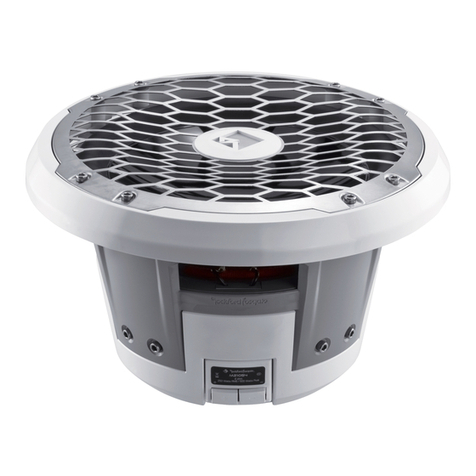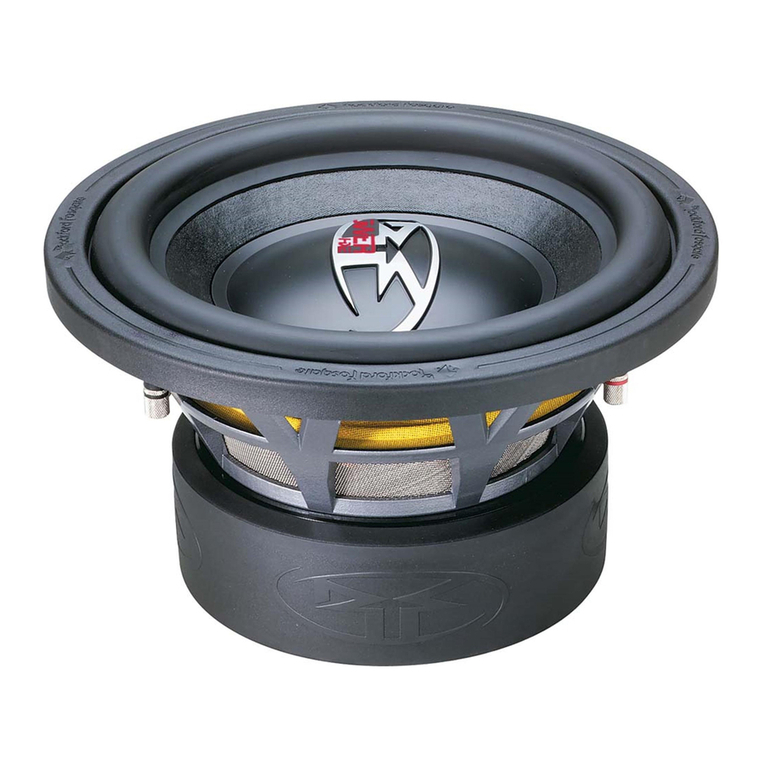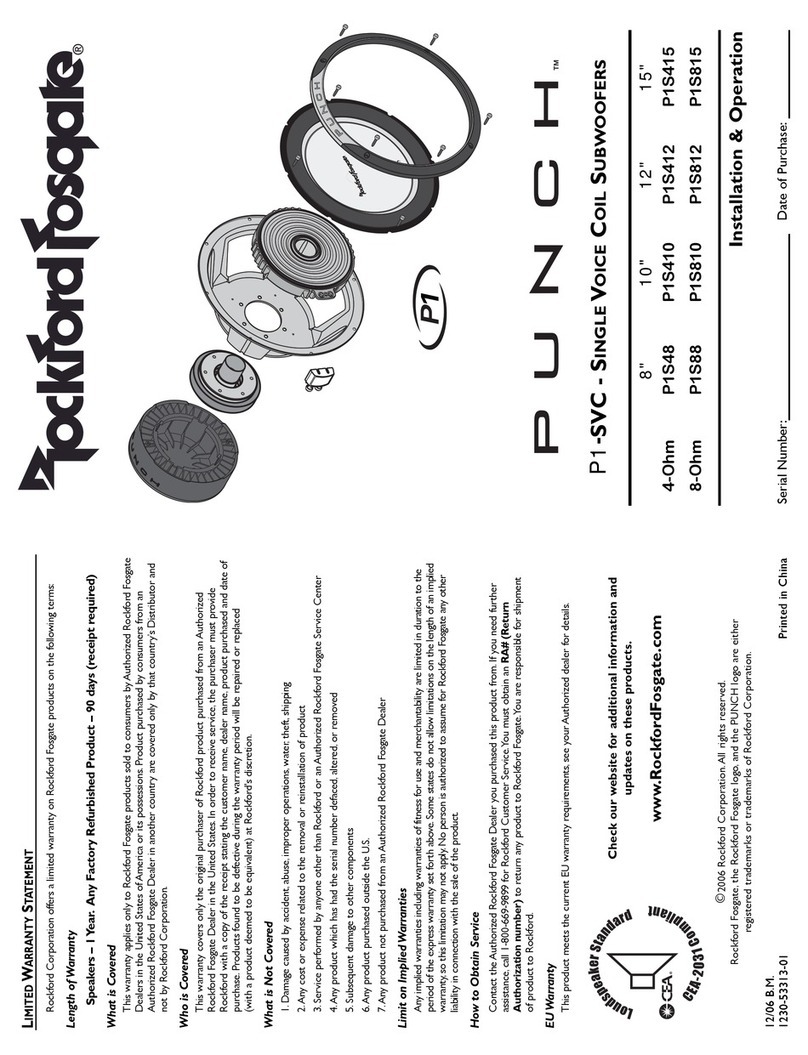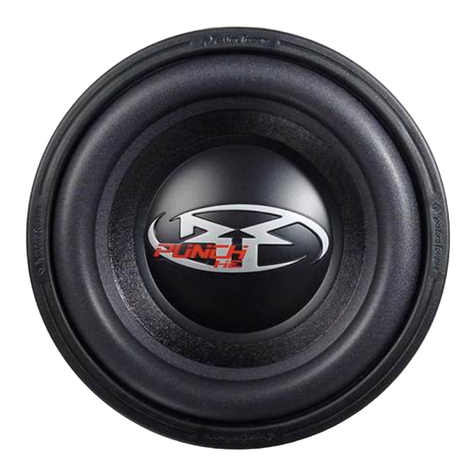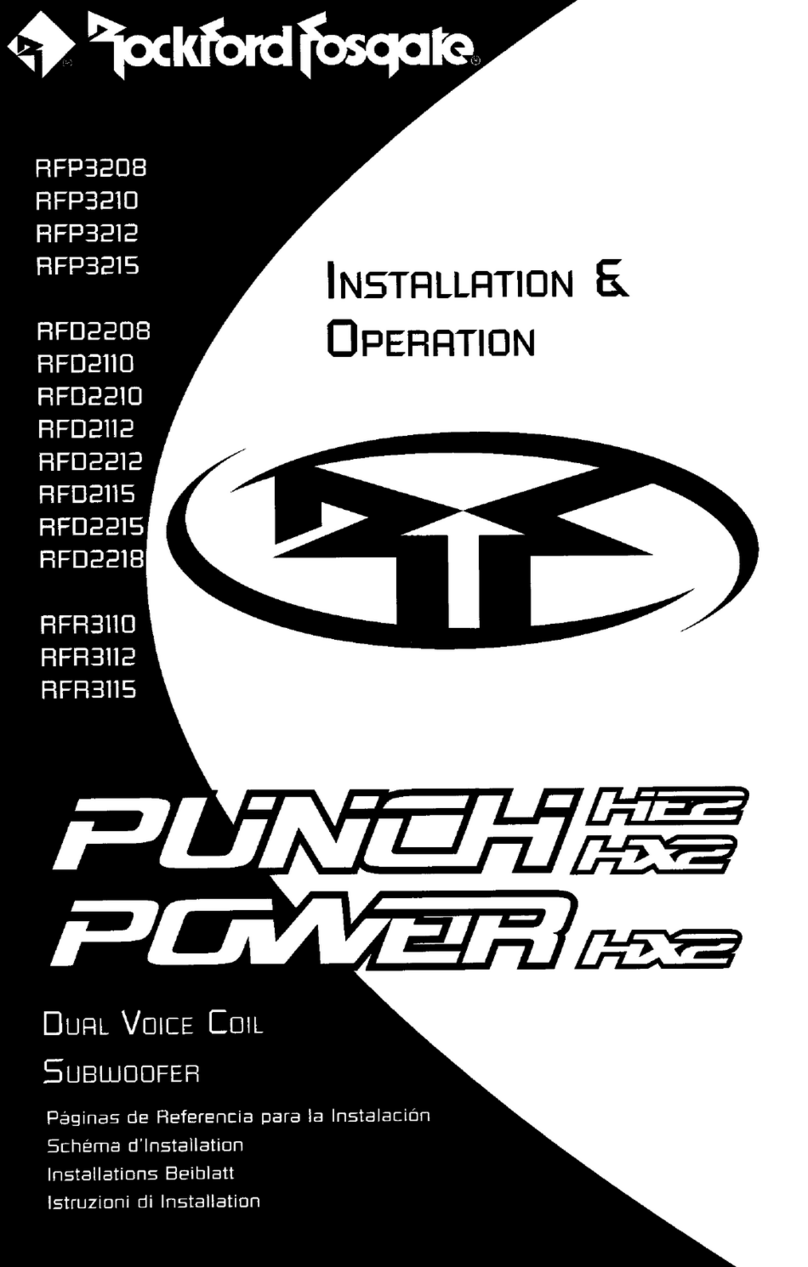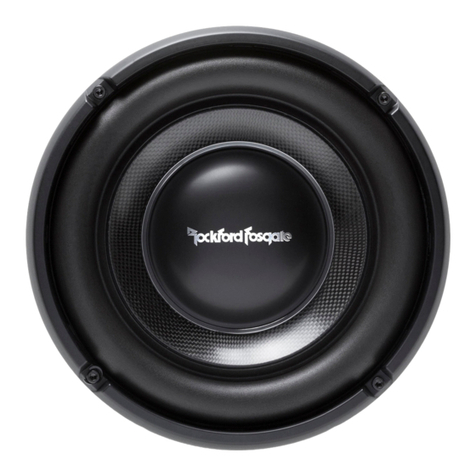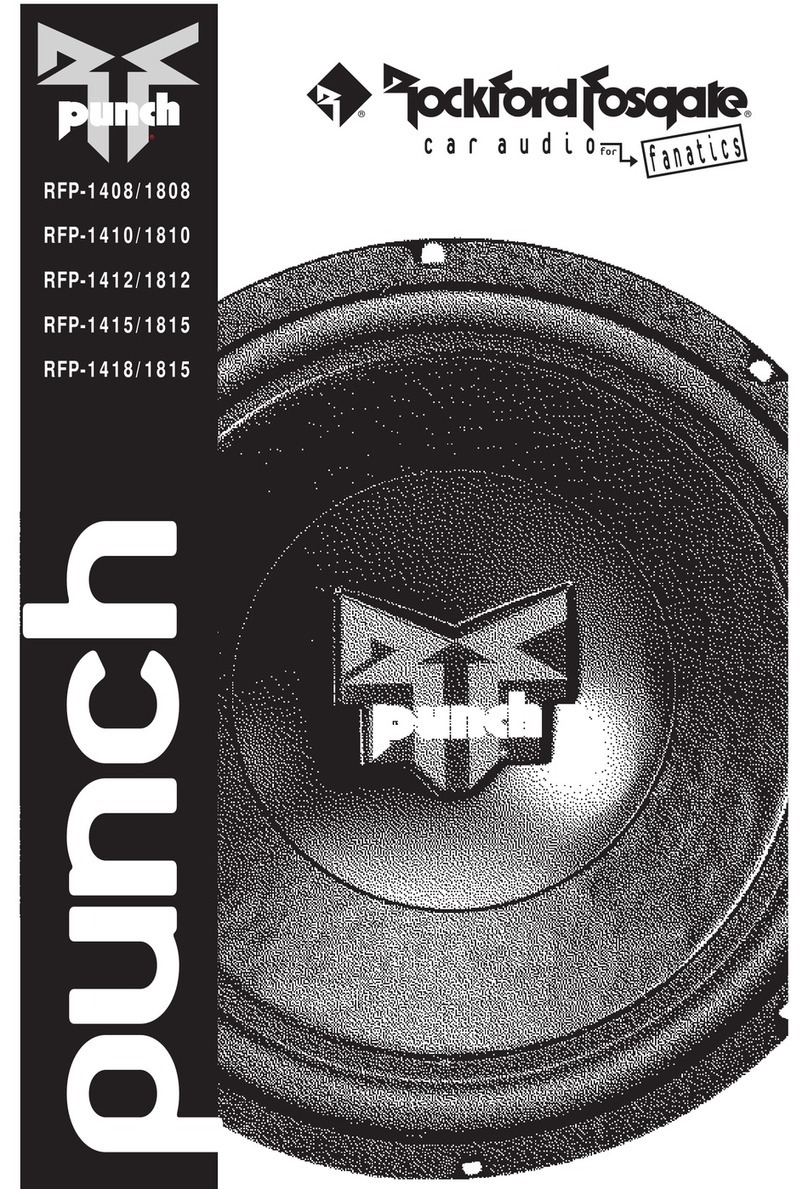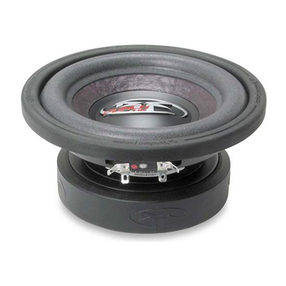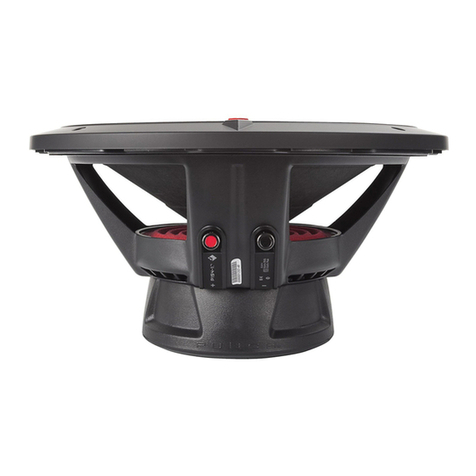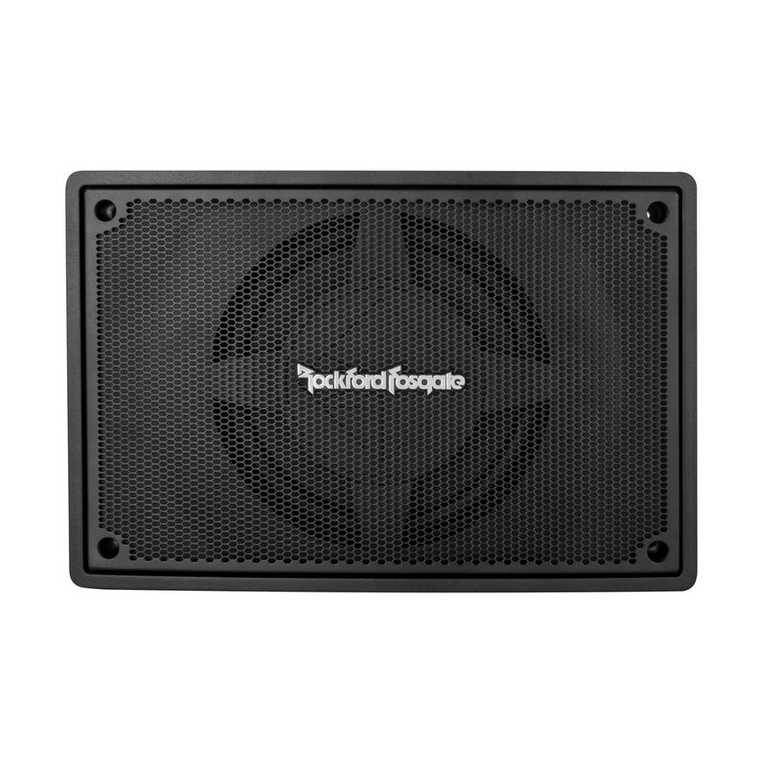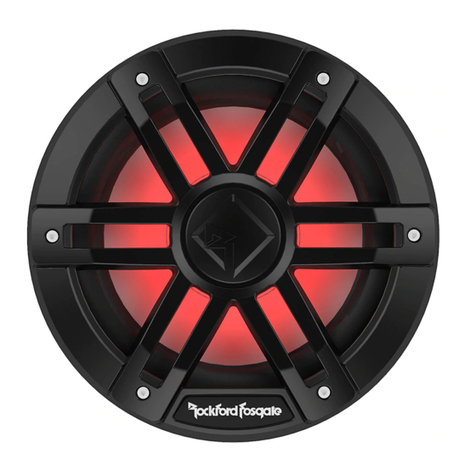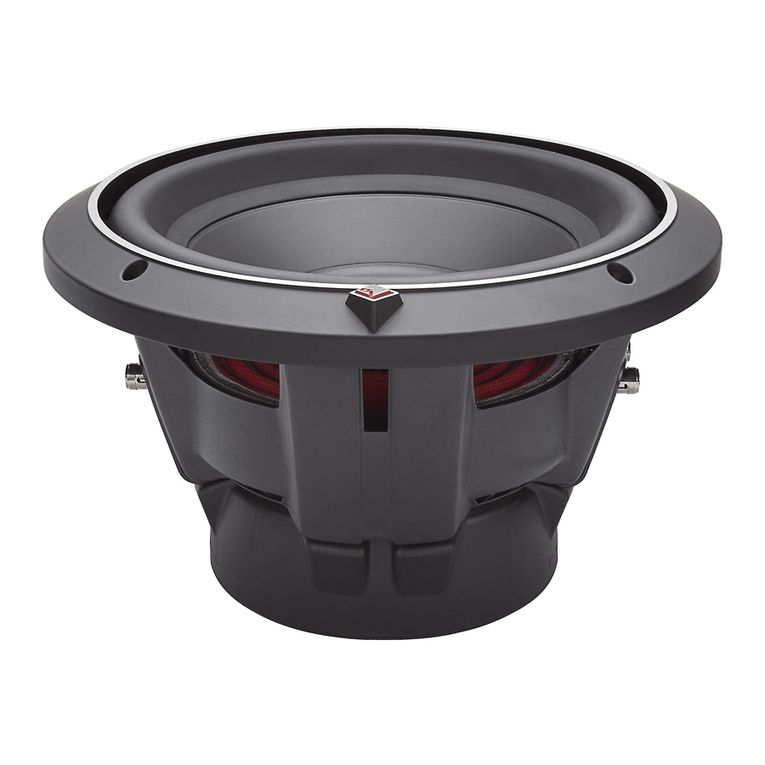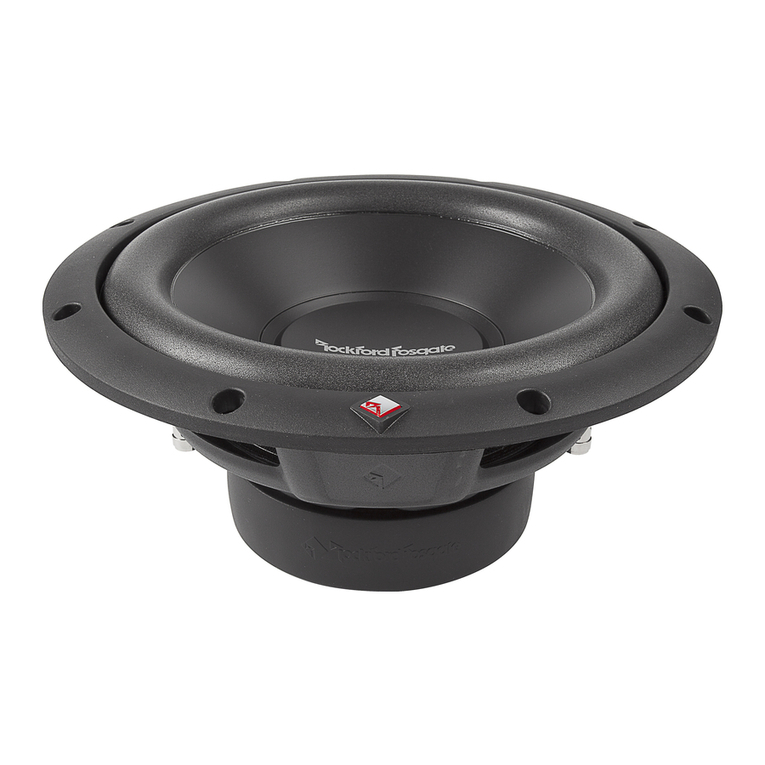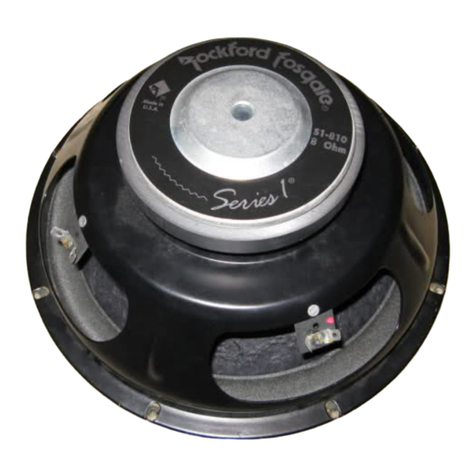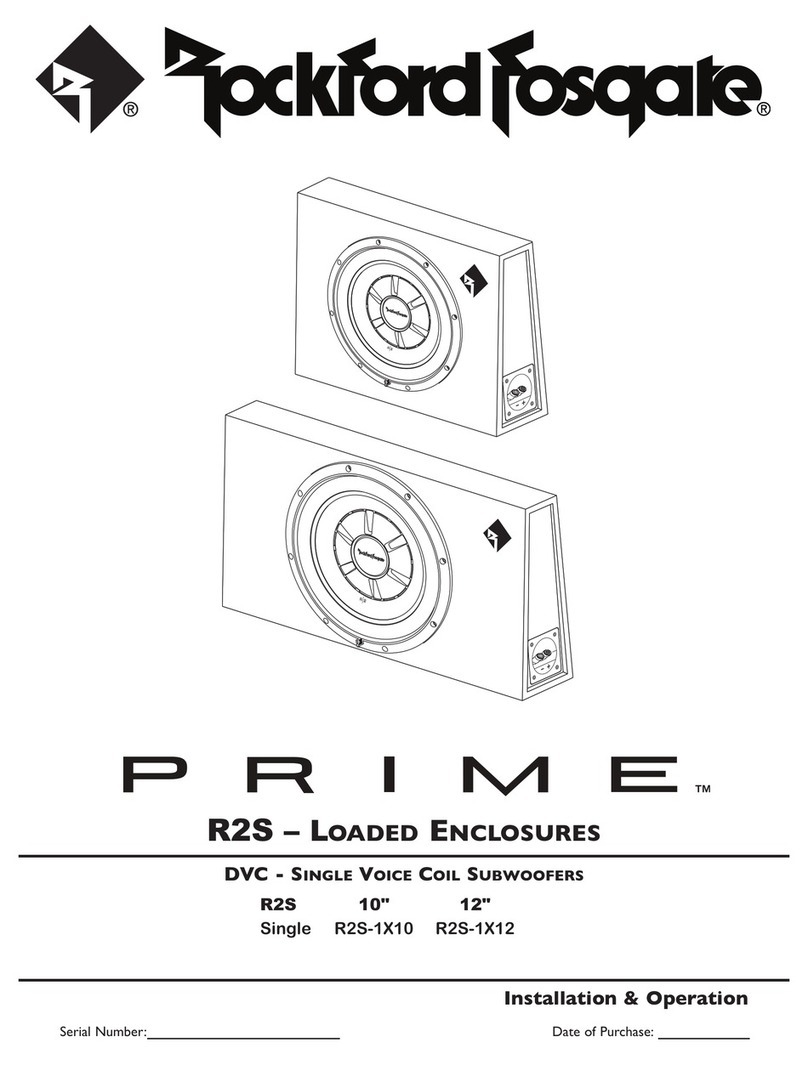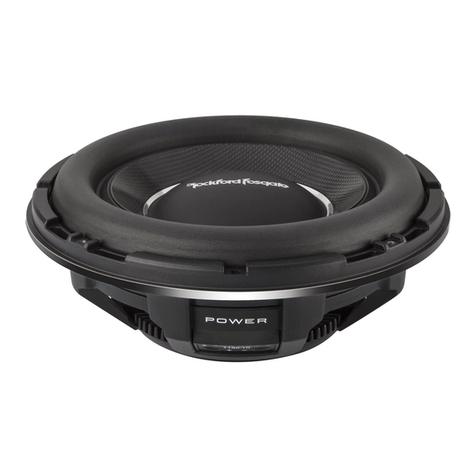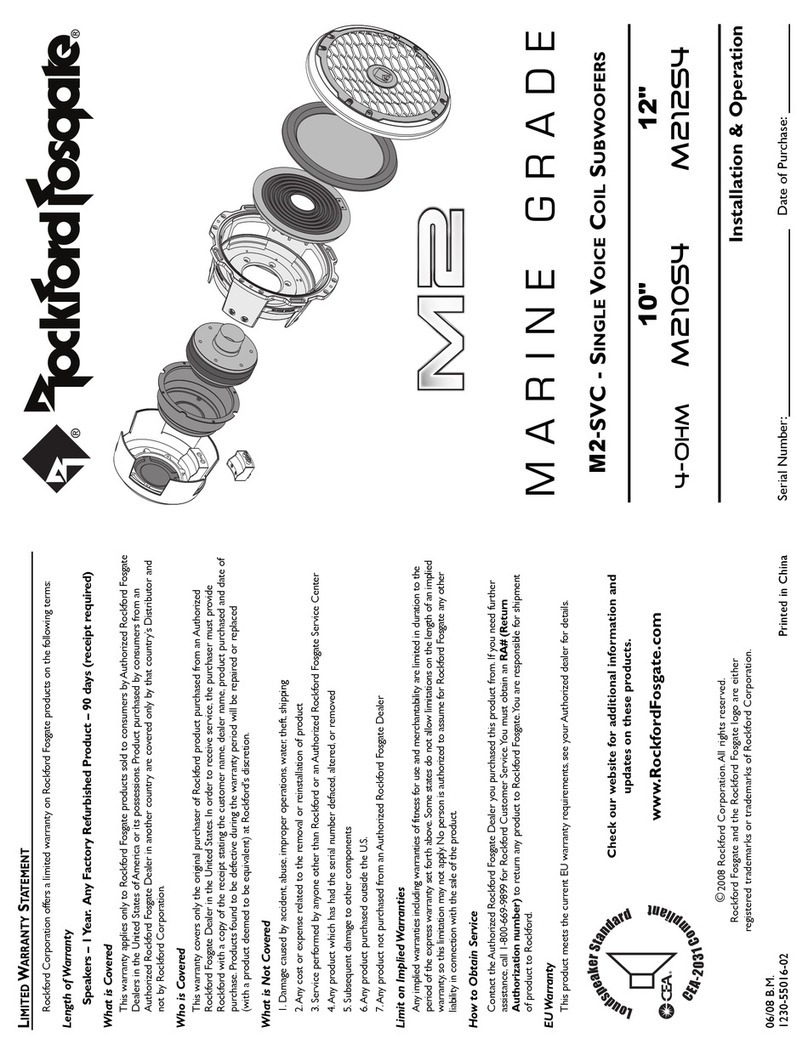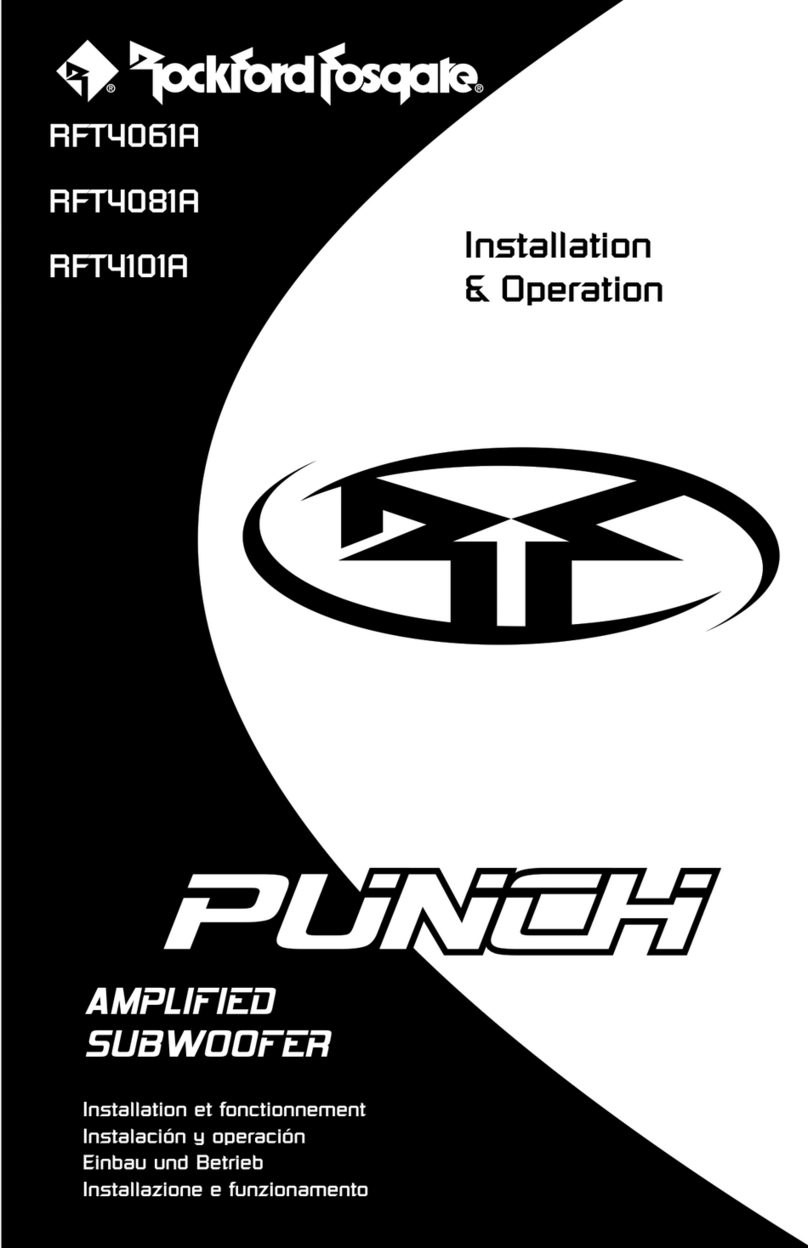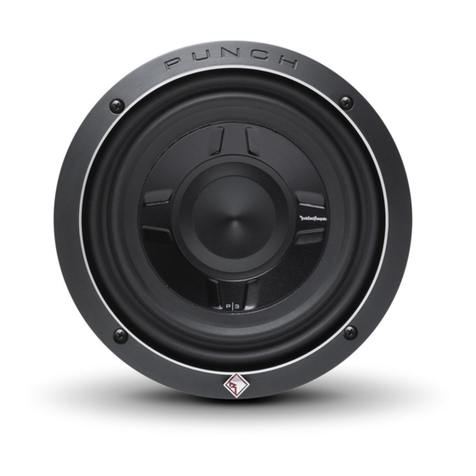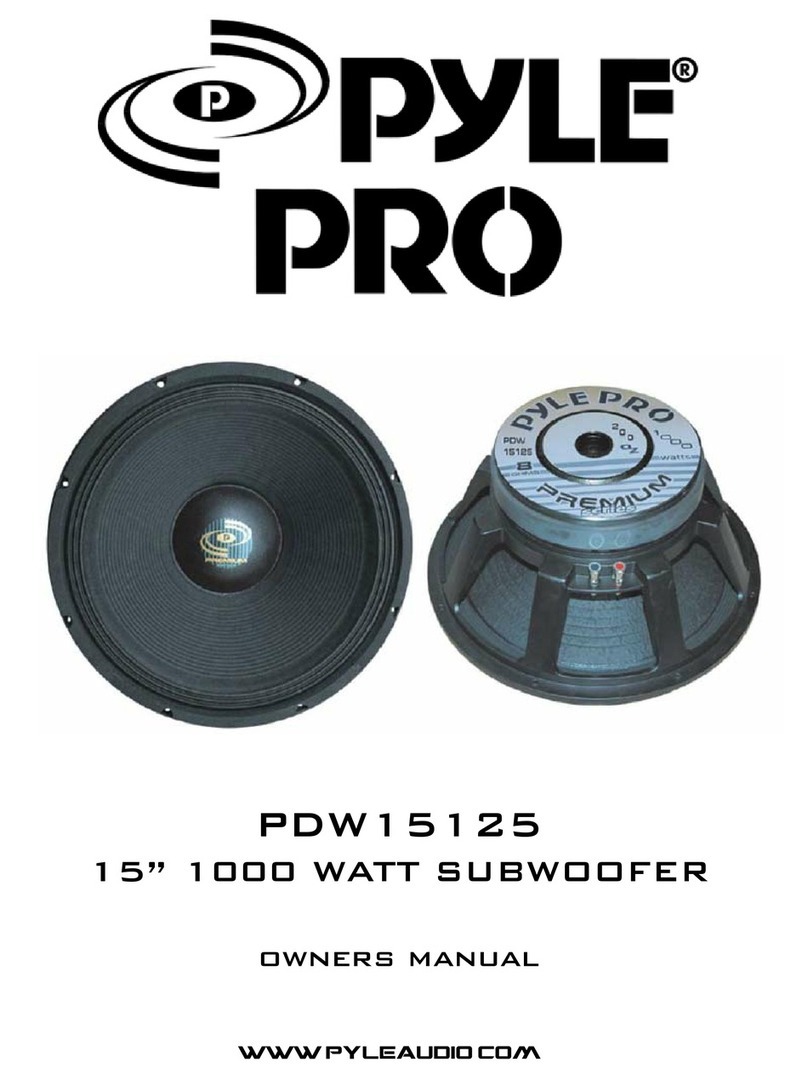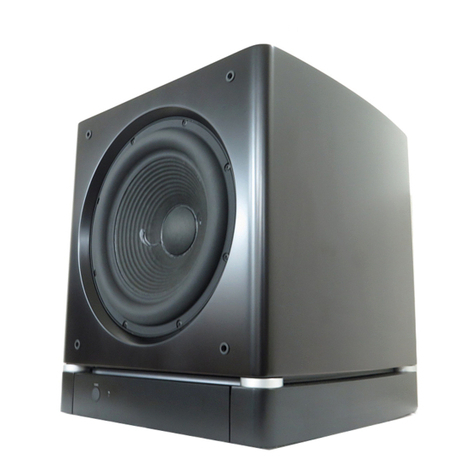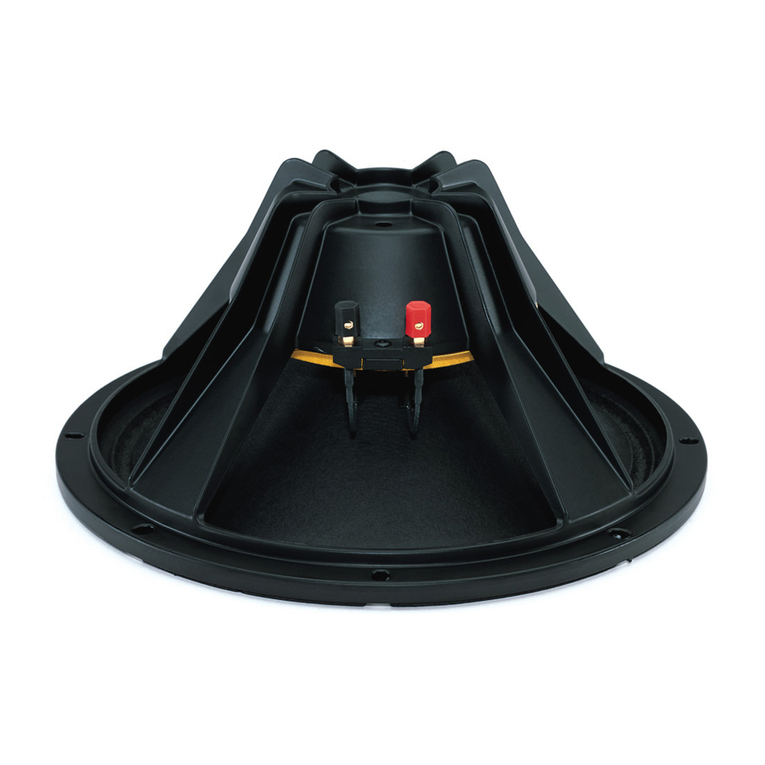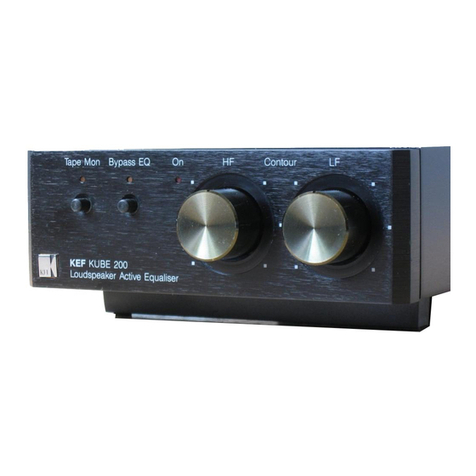
8
Deutsch
VORSICHT: Entfernen Sie vor dem Einbau den negative Batteriepol,
um Schäden am Gerät,Feuer bzw. möglicheVerletzungen zu vermeiden.
Empfohlene Gehäuse
Diese Anleitung beschreibt zwei spezifische Typen von Gehäusen, die grundsätzlich
verschiedene Performancemerkmale bieten. DieserAbschnitt soll Ihnen dabei
helfen zu entscheiden,welcher der besteTyp für Ihre Anwendung ist.
Geschlossene Gehäuse
Geschlossene Gehäuse lassen sich am leichtesten bauen. Der wichtigste Aspekt
beim Bau eines geschlossenen Gehäuses ist zu gewährleisten, dass es luftdicht ist.
DieVerwendung von lebstoff und anderen Dichtungsmitteln an allen Fugen
gewährleistet eine solide onstruktion und verhindert Luftverlust. Das
Gehäusevolumen wirkt sich unmittelbar auf die Performance des Lautsprechers
aus.Größere Gehäuse bieten eine flachere Reaktion und tiefere Bässe, wohingegen
kleinere Gehäuse eine Abweichung in der Reaktionskurve bieten und im
Allgemeinen durch höhere Leistung zu einem höheren Schalldruckpegel führen.
Vo teile von geschlossenen Gehäusen:
• leine Gehäuse
• Lineare (flache) Reaktion
• eine Öffnungsgeräusche
• Hohe Nennbelastbarkeit in allen Frequenzbereichen
• Ausgezeichnete langqualität
Belüftete Gehäuse
Belüftete Gehäuse unterscheiden sich von geschlossenen Gehäusen nur in sofern,
als dass ein Luftschlitz bzw. eine Öffnung hinzugefügt wird, um das Gehäuse zu
„stimmen“. Die empfohlenen Gehäuse sind für hervorragende Gesamtperformance
konstruiert. Größere Gehäuse lassen sich in der Regel leichter auf niedrigere
Frequenzen abstimmen, wohingegen sich mittlere und kleine Gehäuse leichter auf
höhere Frequenzen abstimmen lassen. Das belüftete Design zeigt eine weniger
lineare Reaktion als das geschlossene Gehäuse,erbringt jedoch eine feststellbar
höhere Leistung auf der abgestimmten Frequenz.
Vo teile von belüfteten Gehäusen:
• Höhere Durchschnittsleistung als geschlossene Gehäuse
• Abstimmfrequenz kann leicht durch Änderung der Öffnungslänge angepasst
werden
• Tiefes Bassverhalten bei geringerem raftbedarf
• Gut geeignet für hohe Leistung bei beschränkter raft
Bau des Gehäuses
Um ordnungsgemäß zu funktionieren,müssen die Gehäusewände steif sein und
dürfen nicht nachgeben, wenn sie dem hohen Druck ausgesetzt sind, der bei Betrieb
des Lautsprechers entsteht.Für optimale Performance empfehlen wir Faserplatte
mittlerer Dichte (Stärke ca.1,9 cm) und interneAussteifungen.Das Gehäuse wird
verleimt und mit Nägeln oder Schrauben befestigt.Da Faserplatte luftdurchlässig ist,
wird geraten,das Gehäuse von außen mit Polyurethan zu behandeln.
Berechnung des Volumens
Zur Berechnung desVolumens einfach die Maße feststellen und folgende Formel
anwenden:
Sind zwei gegenüber liegende Seiten ungleich lang, die Durchschnittslänge der
beiden Seiten berechnen. DasVolumen lässt sich mithilfe dieser Zahl berechnen,
ohne das Gehäuse inAbschnitten berechnen zu müssen. Die Stärke des
Resonanzwandmaterials reduziert das Innenvolumen und muss daher zur
Feststellung des Innenvolumens vom Außenvolumen subtrahiert werden. Der
Lautsprecher selbst reduziert das Innenvolumen ebenfalls. Die Luftverdrängung für
jedes Modell ist unterTechnische Daten aufgeführt und muss bei der
Gesamtkalkulation desVolumens ebenfalls subtrahiert werden.
Verkabelungskonfigurationen
DurchVeränderung derVerkabelungskonfiguration Ihrer Lautsprecher können Sie
eine Impedanzlast herstellen, die Ihrem System entspricht. Bietet dieVeränderung
derVerkabelungskonfigurationen eine Reihe von Optionen für die Impedanzlast.
Reihen-, Parallel- oder Reihen-Parallel-Verkabelungen sind verschiedene Techniken
für dieVerkabelung von Lautsprechern, die unterschiedliche Belastungen bieten. Die
Reihenkonfiguration ist eine Reihenmethode,bei der die Lautsprecher von Ende zu
Ende verkabelt werden.Die Parallelkonfiguration verwendet mindestens zwei
Lautsprecher, die über gemeinsame Anschlüsse verkabelt werden. Die Reihen-
Parallel- onfiguration kombiniert beideTechniken.Wählen Sie das nachfolgende
Verkabelungsdiagramm aus, das der Zahl anTieftönern und der Impedanz Ihres
Verstärkers entspricht.
Subwoofer-Crossover
Es gibt zwei Betriebstypen für Crossover, und zwar passive und aktive. Passive
Crossover (Spulen oder Induktoren) werden auf den Lautsprecherkabeln zwischen
Verstärker und Lautsprecher platziert. Ein aktives Crossover ist ein elektronischer
Filter, der das Audiosignal trennt, das verschiedenenVerstärkern zugeführt wird.
Zur optimalen Subwoofer-Performance empfehlen wir dieVerwendung von aktiven
80-100 Hz-Niedrigpass-Crossovern bei 12 dB/Oktav.
PRAKTIZIERE SIE SICHERE SOU D
Fortgesetzte Geräuschdruckpegel von über 100 dB können beim Menschen zu
permanentem Hörverlust führen. Leistungsstarke Autosoundsysteme können
Geräuschdruckpegel erzeugen,die weit über 130 dB liegen.Bitte wenden Sie
gesunden Menschenverstand an und praktizieren Sie sicheren Sound.
Gehäuse-Volumen Höhe (cm) x Breite (cm) x Tiefe (cm)
Vorbei geteilt (Liter) 1000

